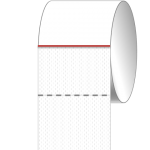My dad told me that a car’s fuel economy is bad in winter, because the engine has to heat a lot more. Well, I read about cold engines, low tire pressure, higher rolling resistance and so on. They didn’t convince me. All together have a substantial impact, I admit, but the most important factor of fuel consumption is not discussed sufficiently!
Remember the formula of the aerodynamic drag force of a car when knowing its frontal area
, its velocity
, the air density
and the drag coefficient
.
The one measure which changes with temperature is the density of air . You may not believe it, but this factor grows from 1.1455 kg/m³ at 35°C (95°F) to 1.3163 kg/m³ at -5°C (23°F). Therefore, you will measure an increase in air drag of 14.9%!
Bear in mind that at velocities >70km/h (44mph) the drag force becomes the major resistance. Hence, when going at speeds of 120km/h (75mph) you can assume that fuel consumption will approximately go up by more than 10%. Also consider that winter’s wind might skrew up fuel consumption entirely…

 (5 votes, average: 4.40 out of 5)
(5 votes, average: 4.40 out of 5)







Leave a Reply